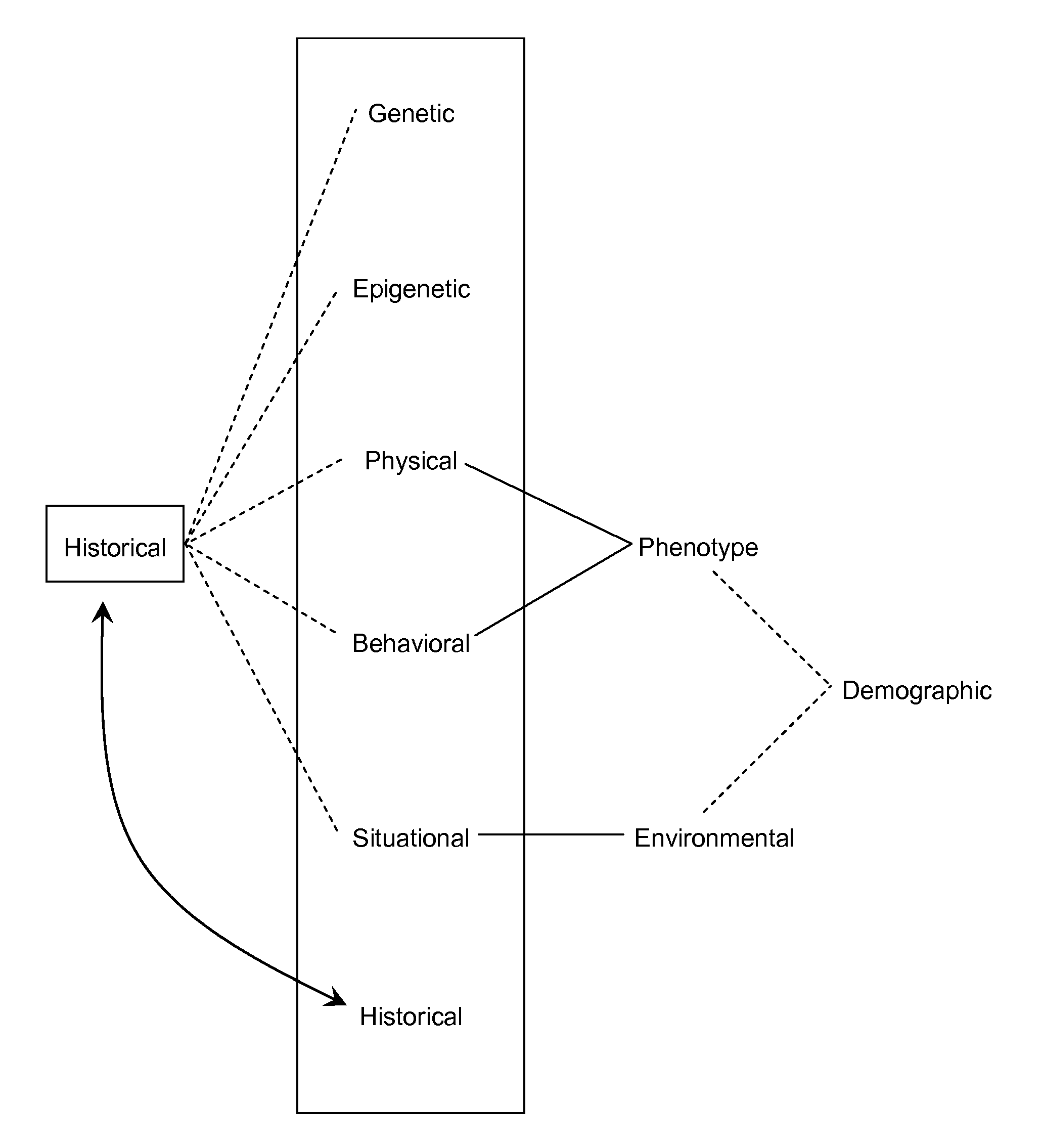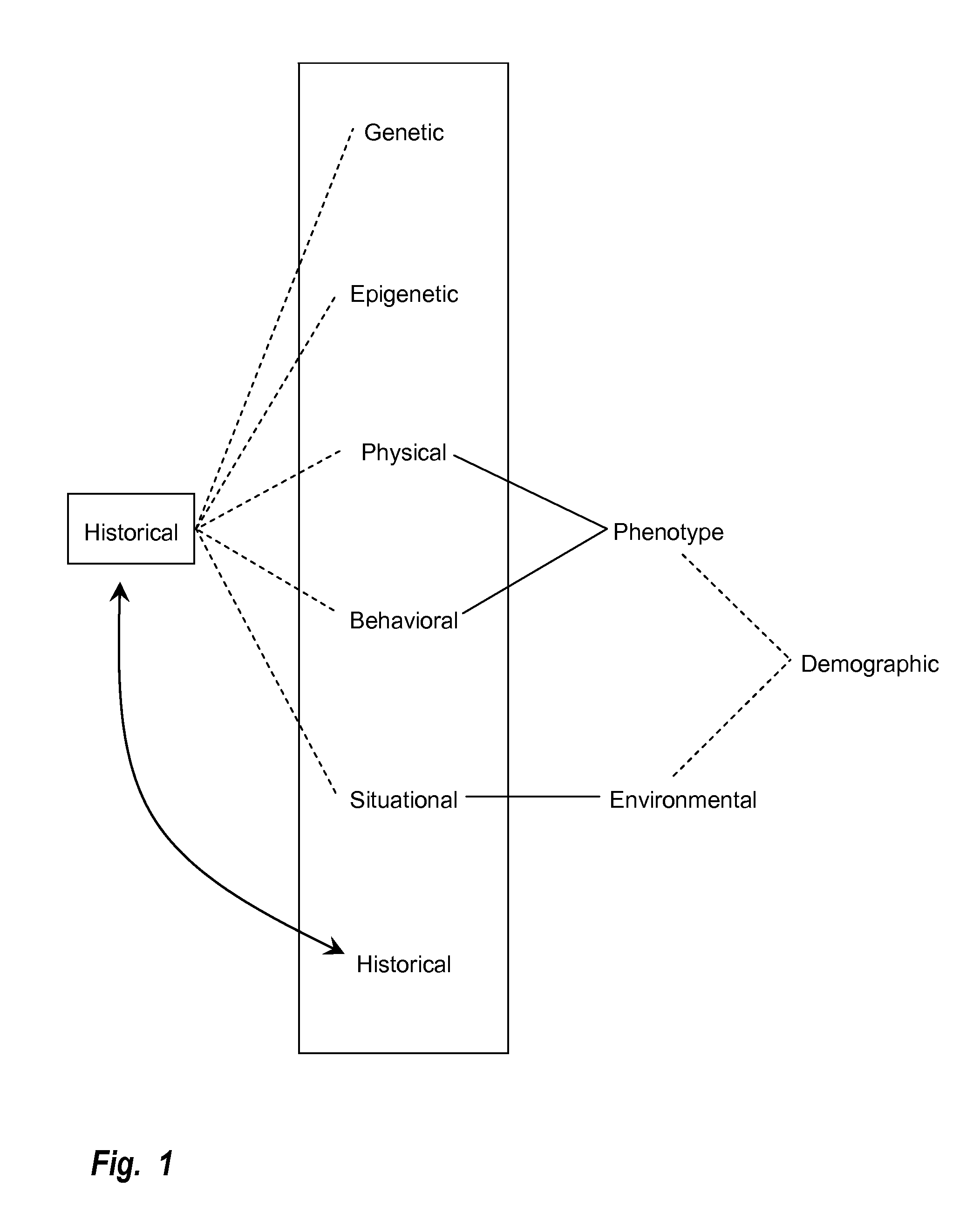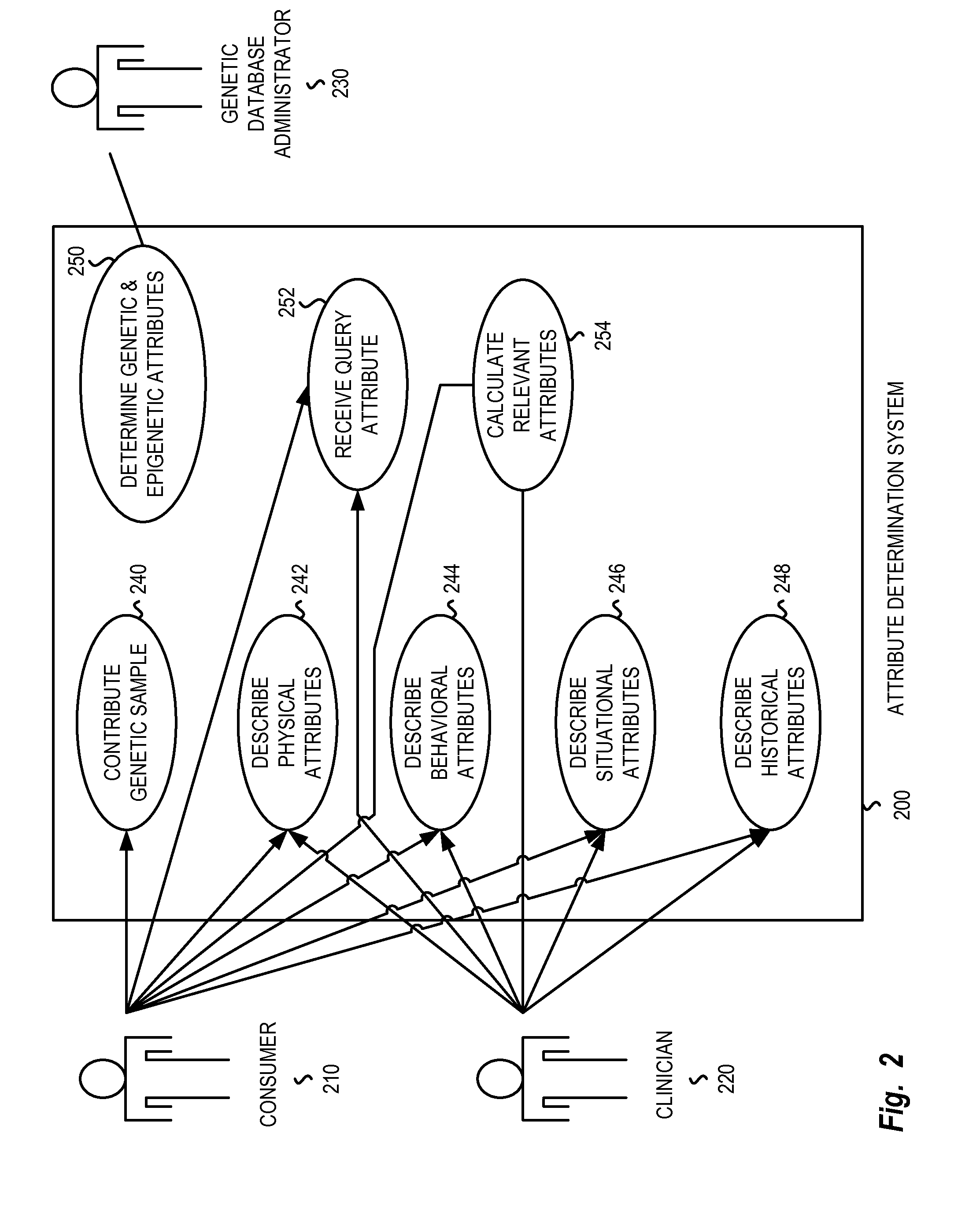Individual Identification by Attribute
an attribute and individual technology, applied in the field of individual identification by attributes, can solve the problems of low resolution afforded by the data typically used, inability to determine the complex combination of attributes, and inability to achieve the resolution of the entire genom
- Summary
- Abstract
- Description
- Claims
- Application Information
AI Technical Summary
Benefits of technology
Problems solved by technology
Method used
Image
Examples
Embodiment Construction
[0044]Disclosed herein are methods, computer systems, databases and software for identifying combinations of attributes associated with individuals that co-occur (i.e., co-associate, co-aggregate) with attributes of interest, such as specific disorders, behaviors and traits. Disclosed herein are databases as well as database systems for creating and accessing databases describing those attributes and for performing analyses based on those attributes. The methods, computer systems and software are useful for identifying intricate combinations of attributes that predispose human beings toward having or developing specific disorders, behaviors and traits of interest, determining the level of predisposition of an individual towards such attributes, and revealing which attribute associations can be added or eliminated to effectively modify what may have been hereto believed to be destiny. The methods, computer systems and software are also applicable for tissues and non-human organisms, ...
PUM
 Login to View More
Login to View More Abstract
Description
Claims
Application Information
 Login to View More
Login to View More - R&D
- Intellectual Property
- Life Sciences
- Materials
- Tech Scout
- Unparalleled Data Quality
- Higher Quality Content
- 60% Fewer Hallucinations
Browse by: Latest US Patents, China's latest patents, Technical Efficacy Thesaurus, Application Domain, Technology Topic, Popular Technical Reports.
© 2025 PatSnap. All rights reserved.Legal|Privacy policy|Modern Slavery Act Transparency Statement|Sitemap|About US| Contact US: help@patsnap.com



